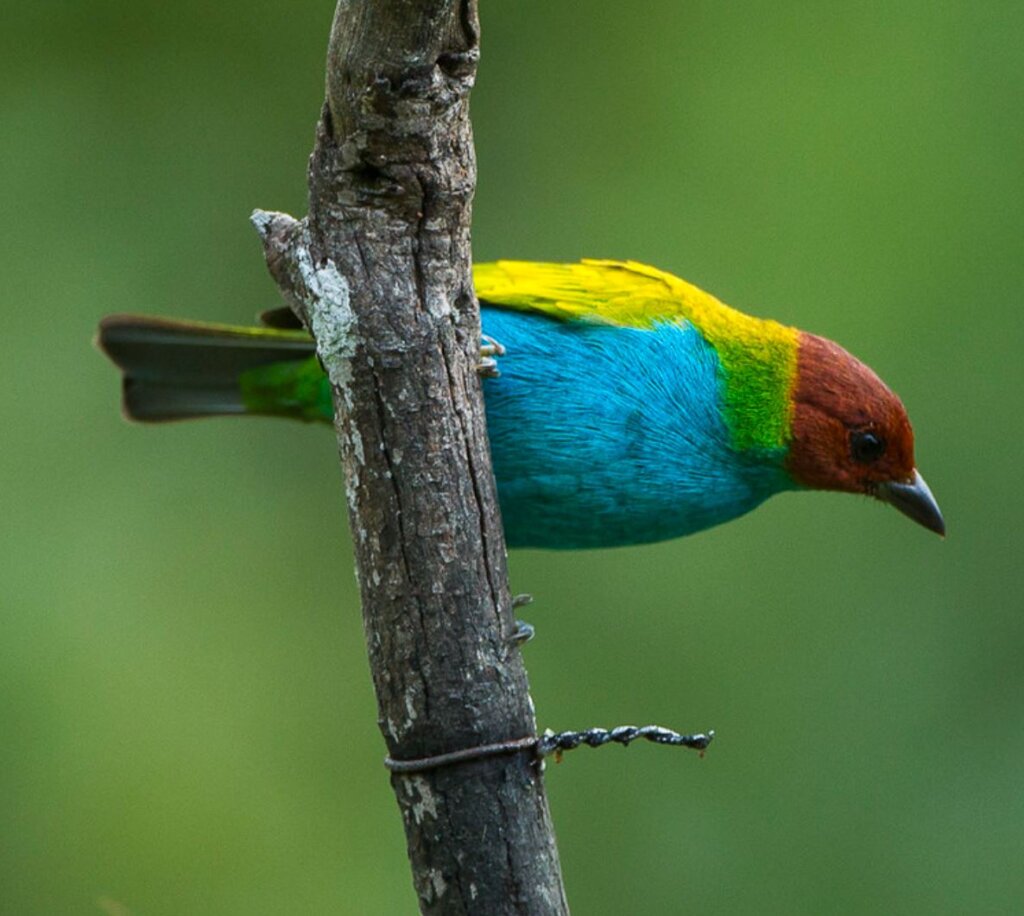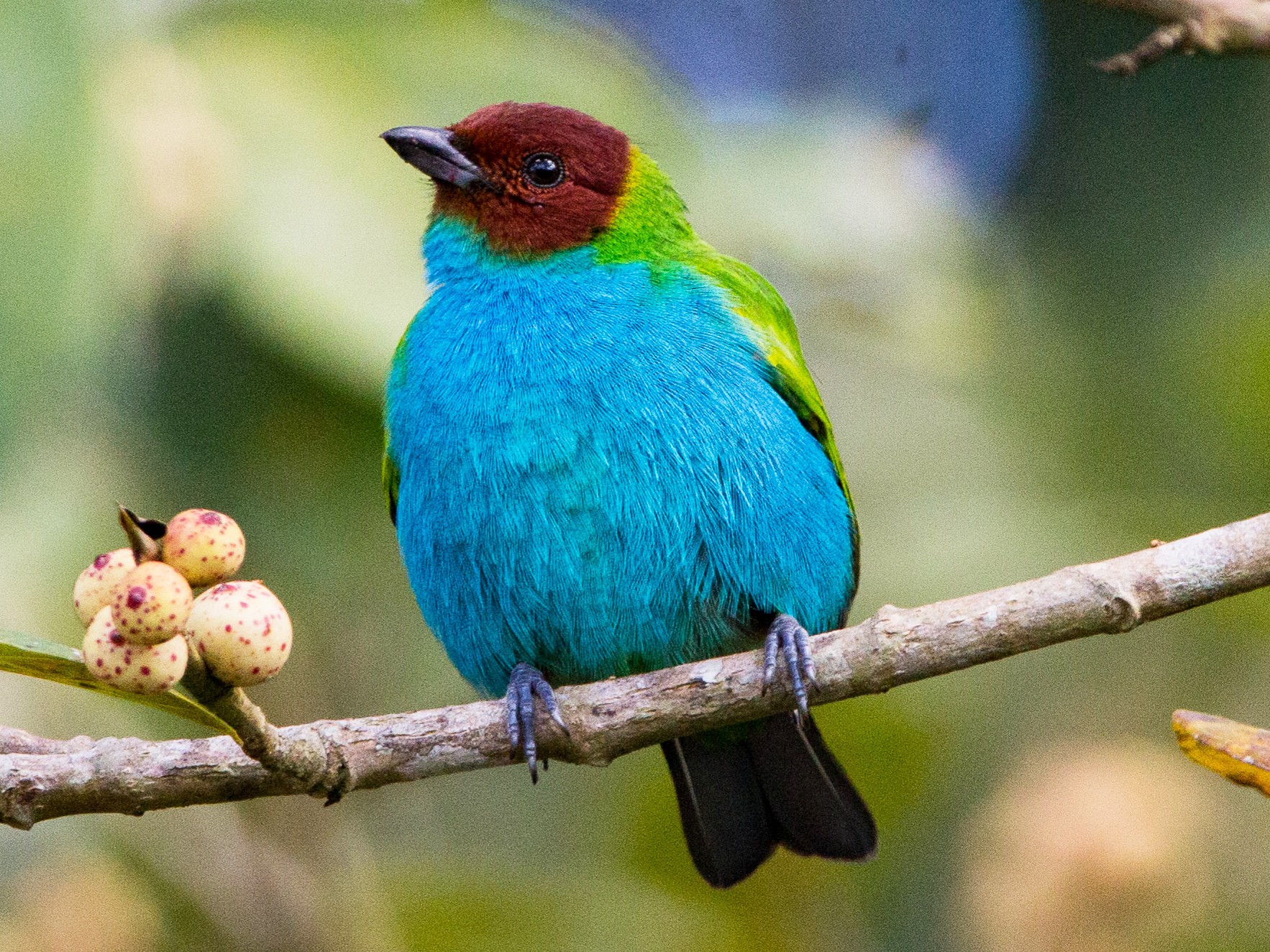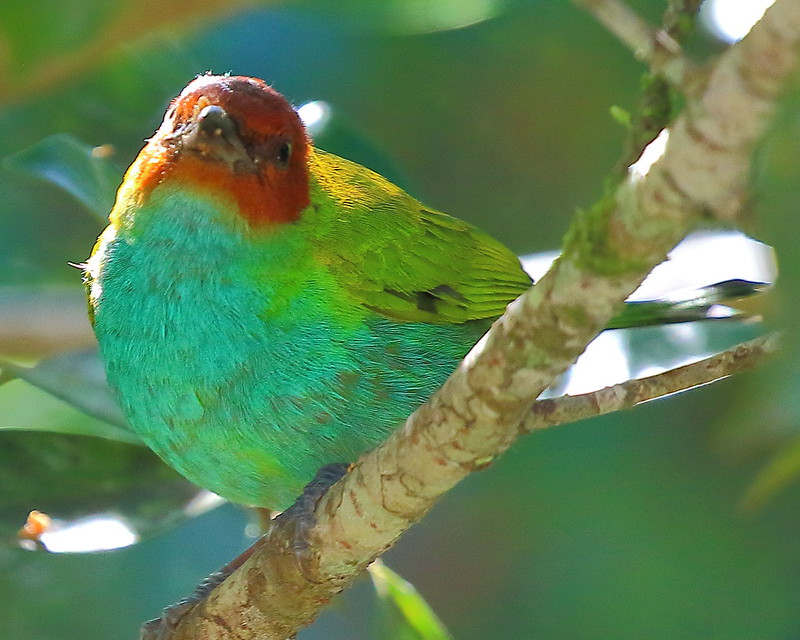A stunning bird, to put it mildly, mostly green with a red head, some populations even have electric blue tops and bottoms!
Meet the Bay-headed Tanager
 Photo courtesy of julian londono / CC BY-SA 2.0
Photo courtesy of julian londono / CC BY-SA 2.0
The bay-headed tanager (Tangara gyrola) is a medium-sized passerine bird measuring about 14 cm long and weighing 19.5 grams. There are about nine subspecies of this bird with considerable plumage variations. The nominate species is primarily green, except for a chestnut-red head, a blue belly, and a thin golden collar behind the neck.
 Photo courtesy of Francesco Veronesi / CC BY-SA 2.0
Photo courtesy of Francesco Veronesi / CC BY-SA 2.0
Males and females tend to look very similar. Although it is believed that identification can be made by the shape of the head.
The male is said to have a flat head, while the hen has a more rounded head. Juvenile birds have duller plumage and heads with brown spots.

These birds are native and resident in Costa Rica, Panama and South America to Ecuador, Bolivia and southern Brazil and Trinidad.

Bay-headed tanagers are primarily found high in trees in forested areas, especially on hills, in the canopy and along forest edges, as well as in adjacent clearings with large trees.
 Photo courtesy of ryanacandee / CC BY 2.0
Photo courtesy of ryanacandee / CC BY 2.0
These birds feed mainly on fruits, but also eat small insects, which they trap near the foliage.
 Photo courtesy of ryanacandee / CC BY 2.0
Photo courtesy of ryanacandee / CC BY 2.0
Bay-headed tanagers build a voluminous cup-shaped nest in a tree, in which they lay up to two white eggs with brown spots. The female incubates the eggs for 13 to 14 days before hatching, and another 15 to 16 days before the chicks fledge.

The global population size of this species has not been quantified, but is believed to be large as these birds are described as “common” in at least parts of their range.
 Photo courtesy of Félix Uribe / CC BY-SA 2.0
Photo courtesy of Félix Uribe / CC BY-SA 2.0
Watch this bird right here in the video below:





